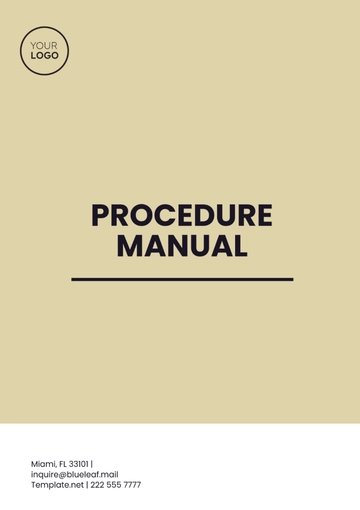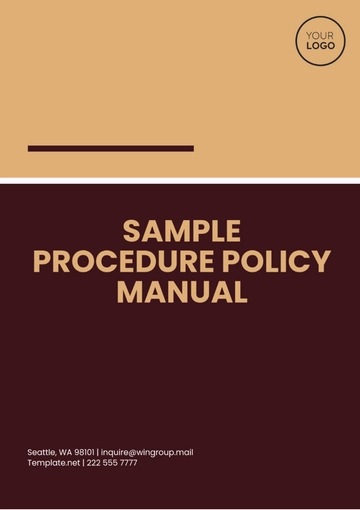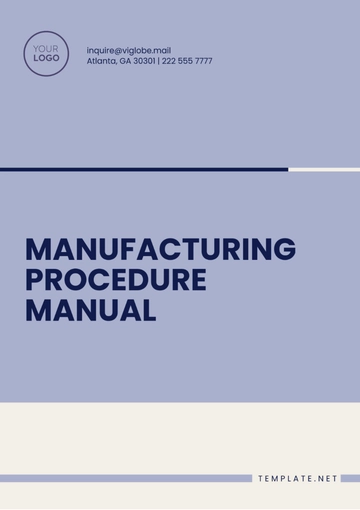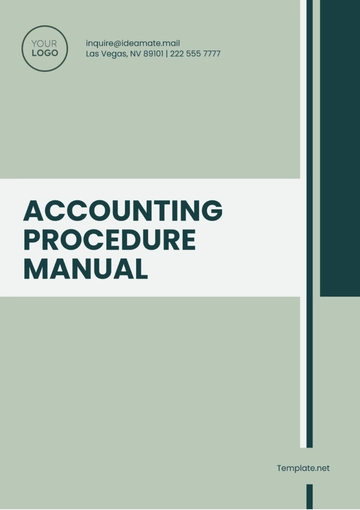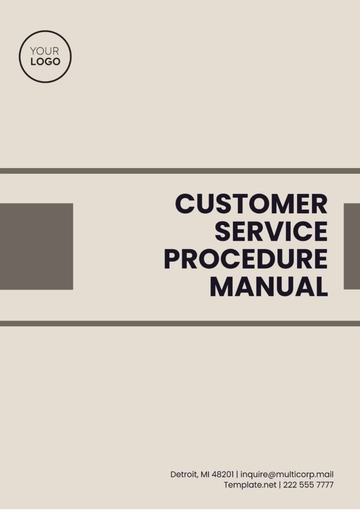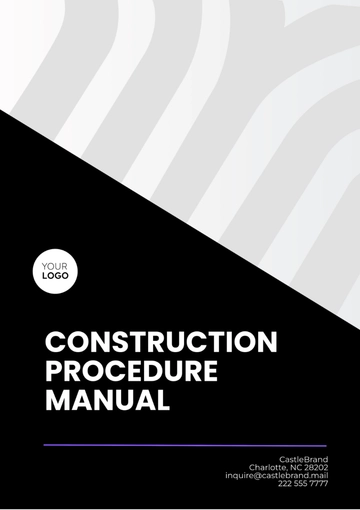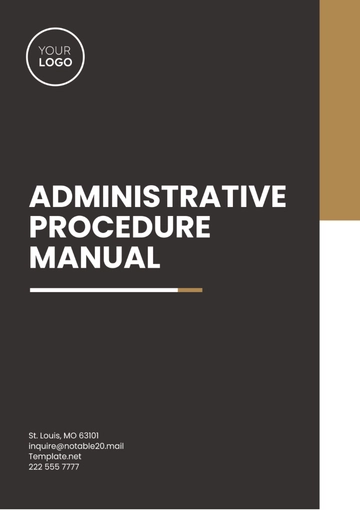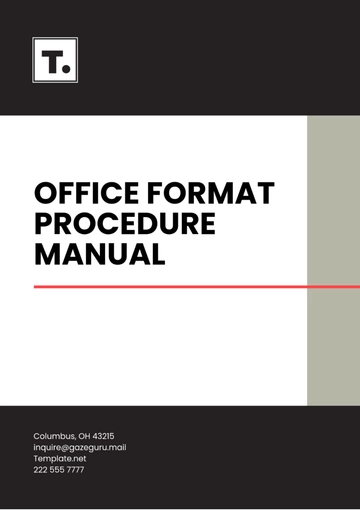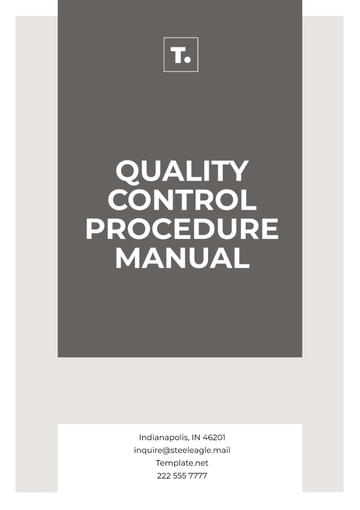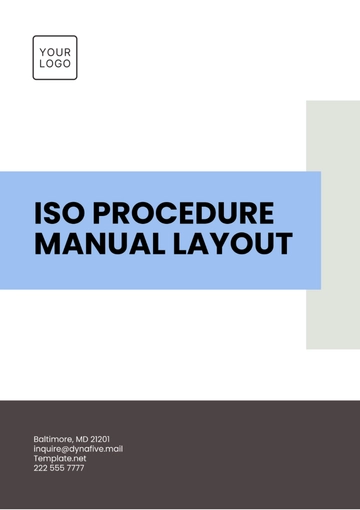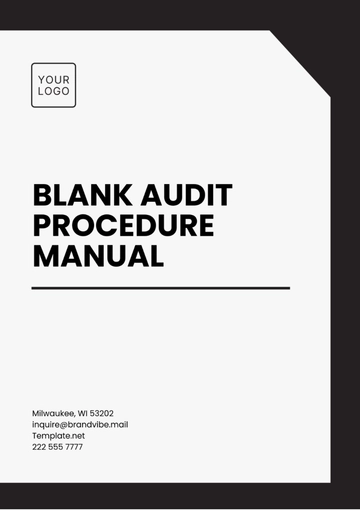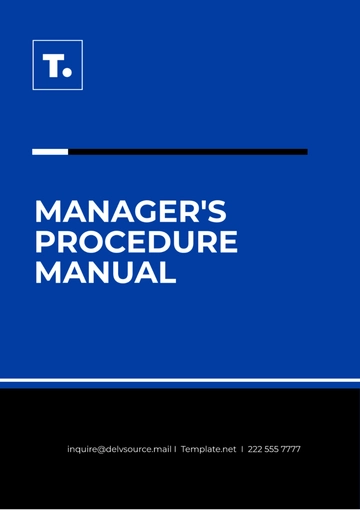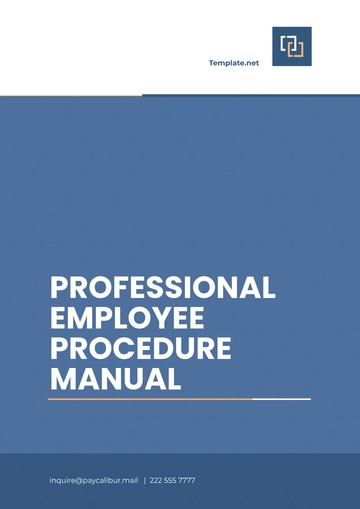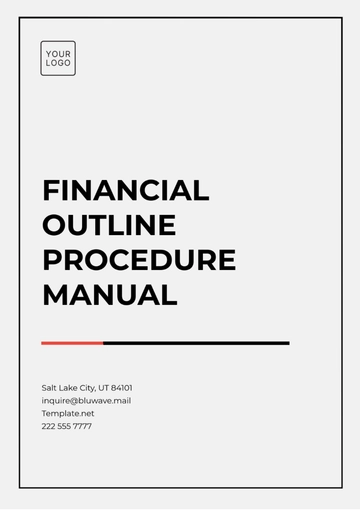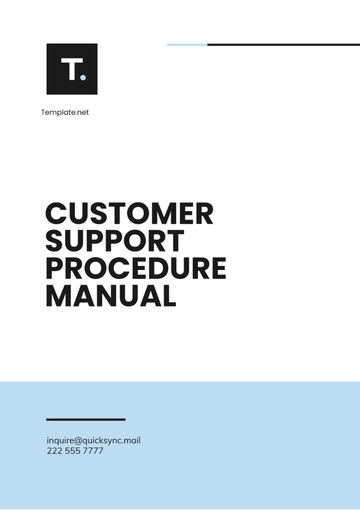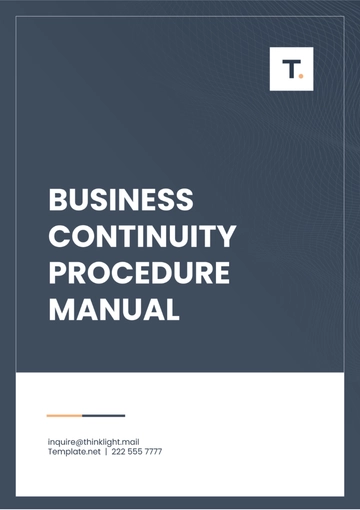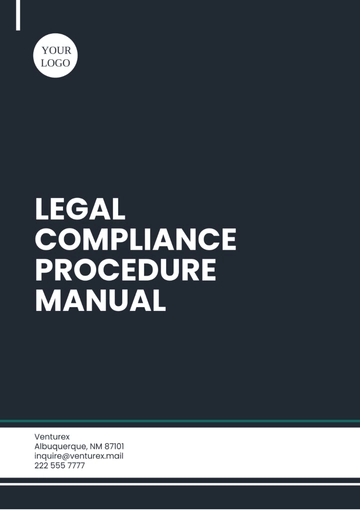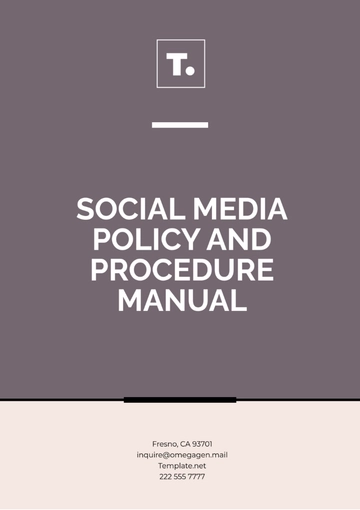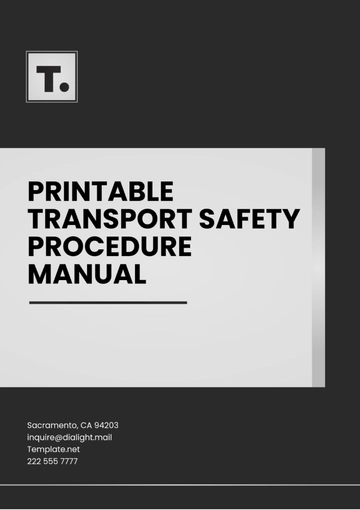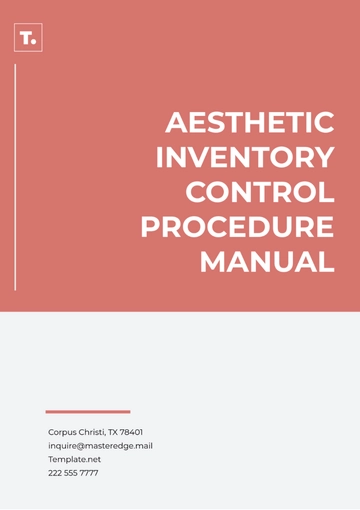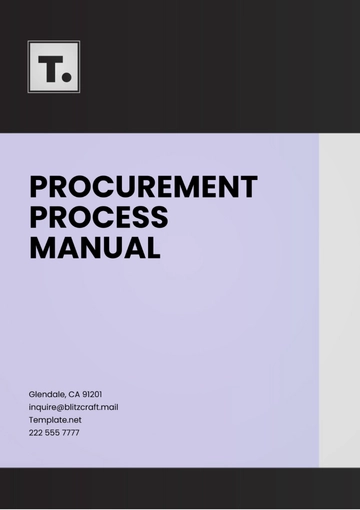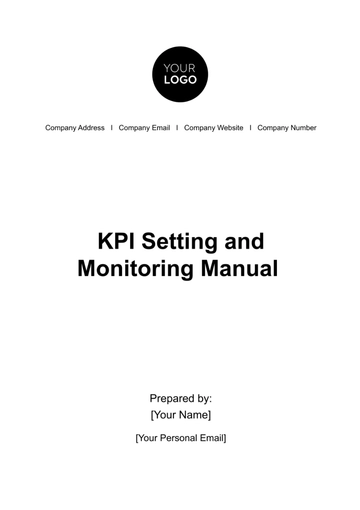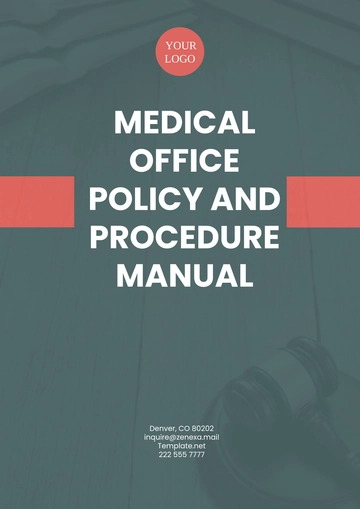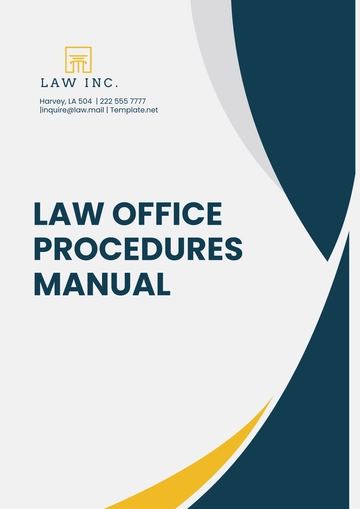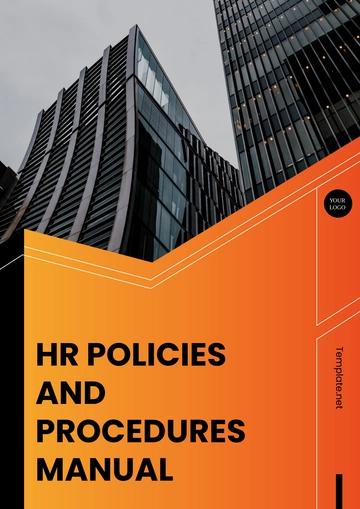Free Health & Safety Awareness Procedure Manual
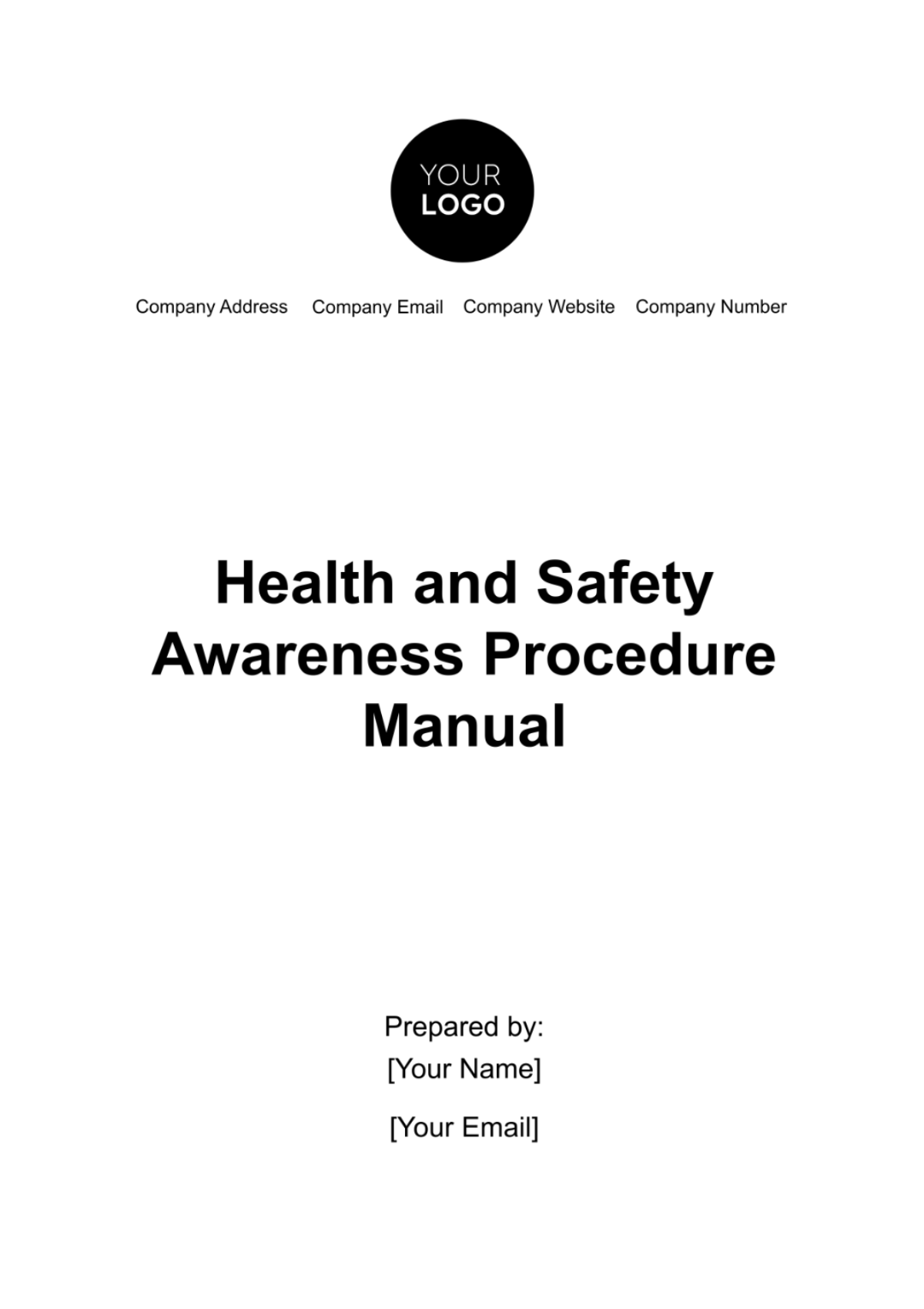
Introduction
A. Background
[Your Company Name] has always prioritized the safety and well-being of its employees. This commitment is reflected in the development and implementation of comprehensive health and safety policies. With a proactive approach, we aim to create a work environment that minimizes risks and ensures the health and safety of every individual associated with [Your Company Name].
B. Purpose
The purpose of this Health & Safety Awareness Procedure Manual is to provide clear guidelines and protocols for maintaining a safe and healthy workplace. It outlines the procedures, responsibilities, and practices that all employees must adhere to, emphasizing our dedication to preventing accidents, injuries, and promoting the overall well-being of our workforce.
C. Scope
This manual applies to all employees, contractors, and visitors associated with [Your Company Name]. It covers all departments and locations where company activities are conducted. The scope extends to every aspect of our operations, ensuring a consistent approach to health and safety across the organization.
D. Responsibilities
Ensuring a safe work environment is a collective responsibility. This section outlines the roles and responsibilities of individuals within the organization, from leadership to frontline staff. Clear delineation of responsibilities ensures accountability and effective implementation of health and safety measures.
Health & Safety Policies
A. [Your Company Name] Policy
At [Your Company Name], we are committed to maintaining the highest standards of health and safety. Our policy outlines the principles that govern our approach, emphasizing compliance with regulations, continuous improvement, and the well-being of our employees. This policy is communicated to all stakeholders to foster a culture of safety throughout the organization.
B. Regulatory Compliance
[Your Company Name] is dedicated to complying with all relevant health and safety regulations. This section details our commitment to staying abreast of legal requirements, conducting regular audits, and implementing necessary changes to ensure compliance. By doing so, we create a secure environment for our workforce.
C. Incident Reporting
Prompt reporting of incidents is crucial for effective resolution. This section outlines the procedures for reporting workplace incidents, including the use of incident report forms, contact information, and the importance of reporting even near misses. Timely reporting enables us to identify trends and implement preventive measures.
D. Emergency Response
In the event of an emergency, [Your Company Name] has established a comprehensive emergency response plan. This section provides details on evacuation procedures, emergency contacts, and communication protocols. Regular drills and training ensure that our workforce is well-prepared to respond effectively to emergencies, minimizing risks and ensuring everyone's safety.
Risk Assessment
A. Identification of Hazards
Identifying potential hazards is a critical step in our commitment to a safe workplace. All employees are encouraged to actively participate in hazard identification. Regular inspections, employee feedback, and incident reports contribute to the identification process. The Hazard Identification Team, composed of representatives from different departments, oversees this crucial aspect of our risk assessment.
B. Risk Evaluation Criteria
To ensure a standardized approach to risk assessment, [Your Company Name] utilizes a set of criteria for evaluating the severity and likelihood of identified risks. This includes considering the potential impact on employees, the environment, and the company as a whole. The criteria are outlined in the Risk Evaluation Matrix, a tool used consistently across the organization.
C. Risk Assessment Process
The risk assessment process involves a systematic approach to evaluating identified risks. This includes:
Identification: Identifying potential hazards through regular inspections, incident reports, and employee feedback.
Evaluation: Utilizing the Risk Evaluation Matrix to assess the severity and likelihood of each identified risk.
Documentation: Recording the identified risks and their assessments.
Prioritization: Prioritizing risks based on their severity and likelihood.
Mitigation Planning: Developing strategies to mitigate and control prioritized risks.
D. Mitigation Strategies
Mitigating identified risks is a proactive measure undertaken to ensure a safe working environment. Strategies include:
Engineering Controls: Modifying equipment or processes to reduce risks.
Administrative Controls: Implementing changes in work procedures and policies.
Personal Protective Equipment (PPE): Providing and enforcing the use of PPE where necessary.
Training: Ensuring employees are adequately trained to recognize and mitigate risks.
Training and Education
A. [Your Company Name] Safety Training Program
Our Safety Training Program is designed to equip employees with the knowledge and skills necessary to maintain a safe workplace. Key components of the program include:
Orientation Training: Provided to all new employees to familiarize them with our health and safety policies.
Job-Specific Training: Tailored training for employees based on their roles and associated risks.
Refresher Courses: Periodic training sessions to reinforce key safety concepts.
B. Training Materials
Training materials include manuals, videos, and interactive modules. These materials are regularly updated to reflect the latest safety standards and regulations. Employees can access these resources through [Your Company Name]'s online training portal.
C. Frequency of Training
Training sessions are conducted regularly, with the frequency varying based on job roles and the level of associated risks. Refresher courses are scheduled annually to ensure that employees stay informed about the latest safety protocols and best practices.
D. Certification Process
Upon successful completion of safety training, employees receive certifications that validate their understanding of safety procedures. These certifications are essential for compliance and are recorded in the employee's training records.
Personal Protective Equipment (PPE)
A. PPE Selection
The selection of Personal Protective Equipment (PPE) is a critical aspect of our commitment to employee safety. PPE is chosen based on the specific hazards identified in the workplace. The selection process considers the nature of the work, potential exposure, and individual employee needs. PPE options are outlined in the [Your Company Name] PPE Catalog, and employees are provided with the necessary equipment as per their job requirements.
B. Issuance and Replacement
[Your Company Name] is responsible for the issuance of PPE to all employees exposed to workplace hazards. PPE is provided during onboarding and whenever job roles change. Additionally, routine checks are conducted to ensure PPE remains in good condition. Any damaged or outdated equipment is promptly replaced to maintain the effectiveness of protective measures.
C. Proper Use and Maintenance
Employees are trained on the proper use and maintenance of the provided PPE. This includes:
Correct Wearing: Ensuring that PPE is worn as intended and in accordance with safety guidelines.
Regular Inspections: Employees are encouraged to inspect their PPE regularly and report any issues.
Maintenance: Performing routine maintenance tasks, such as cleaning and storage, to extend the lifespan of PPE.
D. Monitoring Compliance
Compliance with PPE requirements is monitored through regular inspections and employee feedback. Supervisors and the Health and Safety Committee play a key role in ensuring that employees are consistently using the provided PPE. Non-compliance is addressed promptly through corrective actions and additional training if necessary.
Workplace Inspections
A. Regular Inspections
Routine inspections are conducted to identify and mitigate potential hazards within the workplace. These inspections are scheduled regularly, and the Inspection Team, composed of qualified personnel, follows a comprehensive checklist to ensure a thorough examination of all work areas.
B. Inspection Checklists
Inspection checklists are tailored to specific work areas and activities. The checklists cover a range of safety criteria, including equipment condition, environmental factors, and employee practices. Sample checklists are available in the [Your Company Name] Inspection Manual.
C. Corrective Action Procedures
In the event that hazards or non-compliance are identified during inspections, corrective actions are implemented promptly. The Corrective Action Team assesses the severity of the issues, prioritizes corrective measures, and ensures that necessary changes are made to maintain a safe workplace.
Health and Wellness Programs
A. Fitness for Duty
[Your Company Name] recognizes the importance of employee well-being, including physical fitness for job performance. The Fitness for Duty program encourages employees to maintain a healthy lifestyle through:
Wellness Workshops: Periodic workshops on nutrition, exercise, and healthy habits.
Fitness Facilities: Access to on-site fitness facilities for employees.
B. Ergonomic Practices
Ensuring a comfortable and safe work environment is crucial for employee health. Ergonomic practices at [Your Company Name] include:
Ergonomic Assessments: Regular assessments of workstations to prevent musculoskeletal issues.
Training on Ergonomic Practices: Providing employees with guidance on maintaining ergonomic postures.
C. Mental Health Support
[Your Company Name] is committed to supporting the mental health of its employees. The Mental Health Support program includes:
Employee Assistance Program (EAP): Confidential counseling services for employees.
Mental Health Awareness Campaigns: Initiatives to reduce stigma and raise awareness about mental health.
Emergency Evacuation Procedures
A. Evacuation Routes
Clear and designated evacuation routes are established throughout [Your Company Name]'s facilities. Maps indicating primary and alternative evacuation routes are prominently displayed, and employees are familiarized with these routes during orientation and drills.
B. Assembly Points
Designated assembly points are established to ensure accountability during evacuations. Employees are instructed to gather at these points after evacuating the building. The locations of assembly points are clearly communicated and regularly reviewed.
C. Emergency Contacts
Emergency contacts are essential for effective communication during crisis situations. Employees are provided with a list of emergency contacts, including internal and external resources. Contact information is regularly updated to ensure accuracy.
D. Evacuation Drills
To ensure preparedness, [Your Company Name] conducts regular evacuation drills. These drills simulate emergency scenarios and provide employees with the opportunity to practice evacuation procedures. Post-drill evaluations identify areas for improvement, contributing to continuous enhancement of emergency response capabilities.
Incident Investigation and Reporting
A. Reporting Procedures
Employees play a crucial role in the incident reporting process at [Your Company Name]. Any workplace incidents, accidents, or near misses must be reported promptly using the incident reporting form available on [Your Company Name]'s internal platform. This form captures essential details, including the nature of the incident, date, time, and individuals involved.
B. Investigation Team
The Incident Investigation Team, comprising members with expertise in safety, operations, and relevant areas, is responsible for conducting thorough investigations. This team ensures a comprehensive analysis of incidents, identifying root causes and contributing factors. The team is empowered to make recommendations for corrective actions based on their findings.
C. Documentation
Accurate documentation is vital for incident investigations. The Investigation Team maintains detailed records of each incident, including:
Photographs: Visual documentation of the incident scene.
Witness Statements: Statements from individuals involved or witnesses.
Timeline: A chronological record of events leading up to and following the incident.
D. Corrective Actions
Based on the findings of the investigation, corrective actions are implemented promptly. These actions may include process improvements, additional training, or changes to safety protocols. The effectiveness of corrective actions is regularly reviewed to ensure sustained improvements in workplace safety.
Communication of Health and Safety Information
A. Internal Communication
Internal communication channels are utilized to disseminate health and safety information to all employees. This includes:
Safety Meetings: Regular meetings to discuss safety topics, share incident learnings, and address employee concerns.
Intranet Updates: Timely updates on safety procedures, regulations, and best practices through [Your Company Name]'s intranet.
B. External Communication
External communication is essential for maintaining transparency and fostering collaboration with stakeholders. [Your Company Name] communicates health and safety information to external parties through:
Annual Reports: Inclusion of health and safety performance metrics in annual reports.
Stakeholder Meetings: Engaging with external stakeholders to discuss safety initiatives and address concerns.
C. Communication Channels
Various communication channels, such as email, newsletters, and digital signage, are employed to ensure effective dissemination of health and safety information. Regular audits of communication channels are conducted to assess their efficiency and accessibility.
Continuous Improvement
A. Feedback Mechanisms
Feedback mechanisms are established to encourage employees to provide input on health and safety programs. These mechanisms include:
Anonymous Reporting: Allowing employees to submit feedback anonymously to promote open communication.
Employee Surveys: Conducting regular surveys to gather insights on the effectiveness of health and safety initiatives.
Suggestion Boxes: Placing suggestion boxes in common areas for employees to submit feedback.
B. Evaluation of Health and Safety Programs
The evaluation process involves assessing the effectiveness of health and safety programs. This includes:
Key Performance Indicators (KPIs): Establishing measurable KPIs to track program effectiveness.
Periodic Audits: Conducting audits to evaluate compliance with established safety procedures.
Feedback Analysis: Analyzing feedback from employees and stakeholders to identify areas for improvement.
C. Implementation of Improvements
Based on feedback, evaluation results, and identified areas for improvement, [Your Company Name] implements necessary changes to enhance health and safety programs. This may involve:
Policy Revisions: Updating health and safety policies to reflect industry best practices.
Training Enhancements: Modifying training programs based on feedback and evolving industry standards.
Procedural Adjustments: Implementing changes to procedures and protocols to address identified weaknesses.
- 100% Customizable, free editor
- Access 1 Million+ Templates, photo’s & graphics
- Download or share as a template
- Click and replace photos, graphics, text, backgrounds
- Resize, crop, AI write & more
- Access advanced editor
Introducing Template.net's Health & Safety Awareness Procedure Manual Template, a comprehensive guide for promoting safety protocols in the workplace. Fully customizable and editable in our Ai Editor Tool, this template enables businesses to tailor procedures to their specific needs. Ensure employee safety and compliance with ease, streamlining the creation and implementation of effective safety measures. Simplify the process and enhance workplace safety today.
